Maths by Mr. M. P. Keshari
Exercise - 29
| Activity | Sleep |
School |
Home work |
Play |
Others |
| Number of Hours | 7 |
8 |
4 |
3 |
2 |
| Item of Expenditure | Rent |
Education |
Food |
Clothing |
Others |
| Amount (in Rupees) | 2,700 |
1,800 |
2,400 |
1,500 |
2,400 |
| Commodity | Wheat |
Suger |
Rice |
Maize |
Grams |
| Annual production (in tonnes) | 2750 |
2500 |
1500 |
1000 |
1250 |
Category of Workers |
Cultivators |
Aoricutural Larbourers |
Industrial workers |
Commercial workers |
% |
40 |
25 |
20 |
15 |
Items |
Cement |
Bricks |
Labour |
Timber |
Misc. |
Expence (in %) |
20 |
10 |
25 |
15 |
30 |
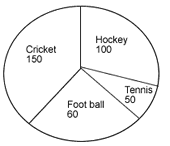
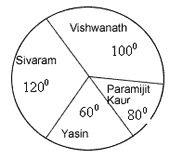
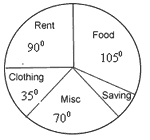
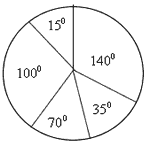
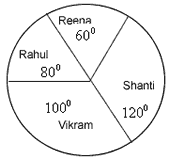
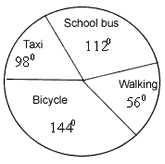
Answers
1.
2.
3.
4.
5.
6. Hockey = Rs. 30,000, Cricket = Rs. 45,000, Foot ball = Rs. 18,000, Tennis = Rs. 15,000
7. 720 votes, 120 votes, 40 votes
8. 600, 7 : 6, Rs. 9,720; Rs. 1,890
9. Rs. 1,50,000; Rs. 1,05,000; Rs. 2, 10,000; Rs. 52,500; Rs. 22,500
10. Shanti; 120(Reena); 40votes; 
11. 900; 280; 120; 2 : 1
| Subjects | Maths (Part-1) by Mr. M. P. Keshari |
| Chapter 9 | Circle |
| Chapter 10 | Tangents to a circle |
| Chapter 11 | Geometrical Construction |
| Chapter 12 | Troigonometry |
| Chapter 13 | Height and Distance |
| Chapter 14 | Mensuration |
| Chapter 15 | Statistics |
| Chapter 16 | Probability |
| Chapter 17 | Co-ordinate Geometry |